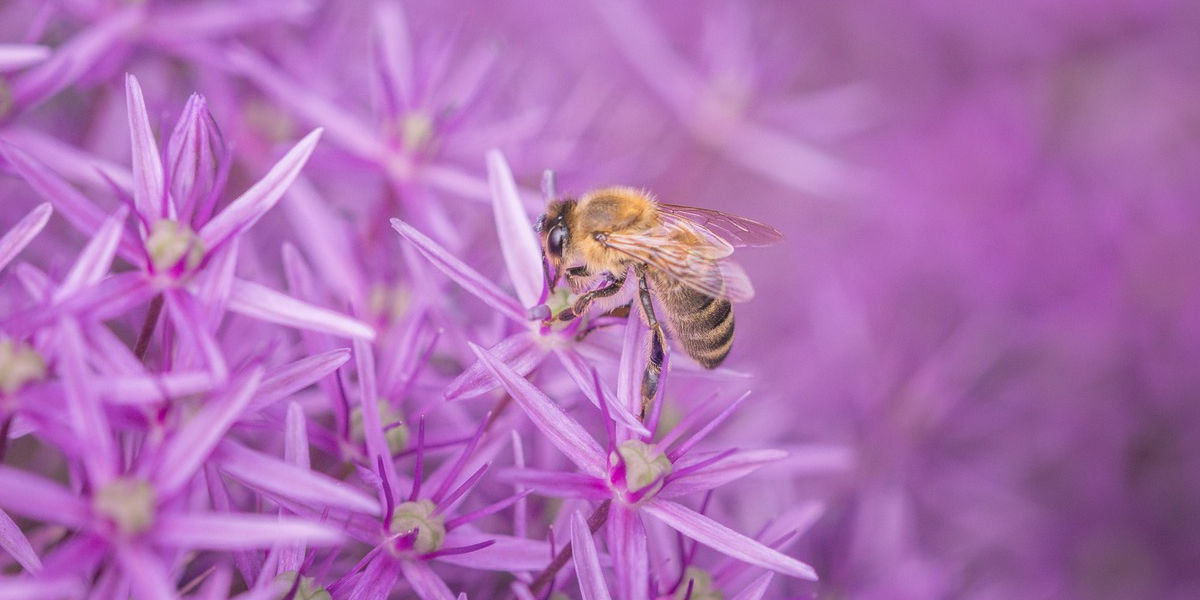Ever wondered how gardens look beautifully arrayed with an assortment of flowers all year round? Have questions like 'how do bees pollinate flowers?' or 'why is this process important to our ecosystem?'. It is the diligent bee that masterfully sculpts this colorful tapestry nature presents us with. These little creatures, buzzing about in their striped attire, are nature's often overlooked artists, painting life onto a canvas of soil and blossoms. This article aims at unravelling the intricacies of their craft - the art of pollination and the role these critters play in sustaining vibrant ecosystems across the globe.
Understanding Pollination: The Vital Process
Pollination is the fusion of art and science that unveils the mystery behind plant reproduction. To understand this, imagine flowers as female structures and pollen grains as male ones. When pollen from a flower's stamen (male reproductive organ) gets transferred to another flower's stigma (part of the female organ), the magical act of reproduction ensues.
The pollen grains embark on a nourishing journey down the flower’s style, eventually reaching the ovary. Here, they fertilize the ovules leading to seed and fruit formation. While pollination can occur through self-pollination, the diversity of the plant kingdom is maintained largely through cross-pollination - a process wherein pollen is transferred between flowers of different plants.
How Do Bees Pollinate Flowers?
Bees, being the keen and tireless workers they are, stand unparalleled in their role as nature's premium pollinators. Moving meticulously from flower to flower, bees collect nectar, their main source of energy. In this pursuit of sustenance, bees inadvertently undertake a much grander task – pollination.
Attracted by a flower's bright colors and sweet nectar, a bee lands on a bloom. As it navigates its way into the flower, pollen grains from the stamen stick onto the bee. This transfers to the stigma of the next flower the bee visits, achieving cross-pollination. This may make the process sound trivial or random, but it is far from it. The harmony between bees and flowers exemplifies a sophisticated form of coevolution and mutual benefit, where bees get their food and flowers, their pollinators.
Understanding the Bee Behavior
Bees are fascinating creatures. They display diligence, commitment, and an impressive level of organization. Every bee in a colony has a specific role, whether it is to forage for food, defend the hive, or look after the young ones. Each of these roles represents an integral part of the marvelous cycle of bee existence.
The task of pollination is primarily accomplished by forager bees. These bees are mature individuals who are charged with the collection of nectar and pollen from flowers. As a bee lands on a flower, its body becomes coated with pollen grains, which are the male reproductive cells of a flower.
Subsequently, when the bee visits another flower, some of these pollen grains rub off onto the female part of this second flower, effectively fertilizing it. This cross-pollination process, ably facilitated by bees, leads to the production of fruits and seeds, ensuring the continuation of plant species.
Yet, it's not just the strength in numbers that make bees such effective pollinators. It's their special body structure. Most bees' bodies are covered with tiny hairs. These hairs are specially adapted to catch pollen grains.
The Impact of Bee Pollination on Ecosystems
Bees' contribution to our planet, however, goes far beyond simply helping plants produce fruits and seeds. Around 85% of all the flora in the world rely on bees for pollination. This implies that these tiny pollination powerhouses play a crucial role in maintaining the health of our ecosystem.
When bees transfer pollen from one flower to another, not only do they facilitate the reproduction of flowering plants, but they also help maintain the biodiversity of various ecosystems. This pollination service supports the populations of other insects, birds, and mammals who feed on the fruits and seeds that bees help produce.
The Threats that Affect Bees
Despite their crucial role in preserving our ecosystem, bees across the globe are facing various threats. Habitat loss, excessive use of pesticides, and the challenging climate changes have all adversely impacted the bee populations. When bees face threats, it sets off a ripple effect throughout ecosystems and can negatively affect biodiversity and food sources for other species.
The Power of Protecting Bees
Interestingly, we all can do our part in bee conservation. Whether it is planting bee-friendly plants in our garden, avoiding pesticide use, or supporting local beekeepers, each individual effort can help to preserve these tiny powerhouses of pollination.
The plight of the bees is really the plight of us all. As custodians of the Earth, it is our responsibility to protect these creatures, who in turn, protect our ecosystem at large. Remember, when we help bees, we are actually helping ourselves.




